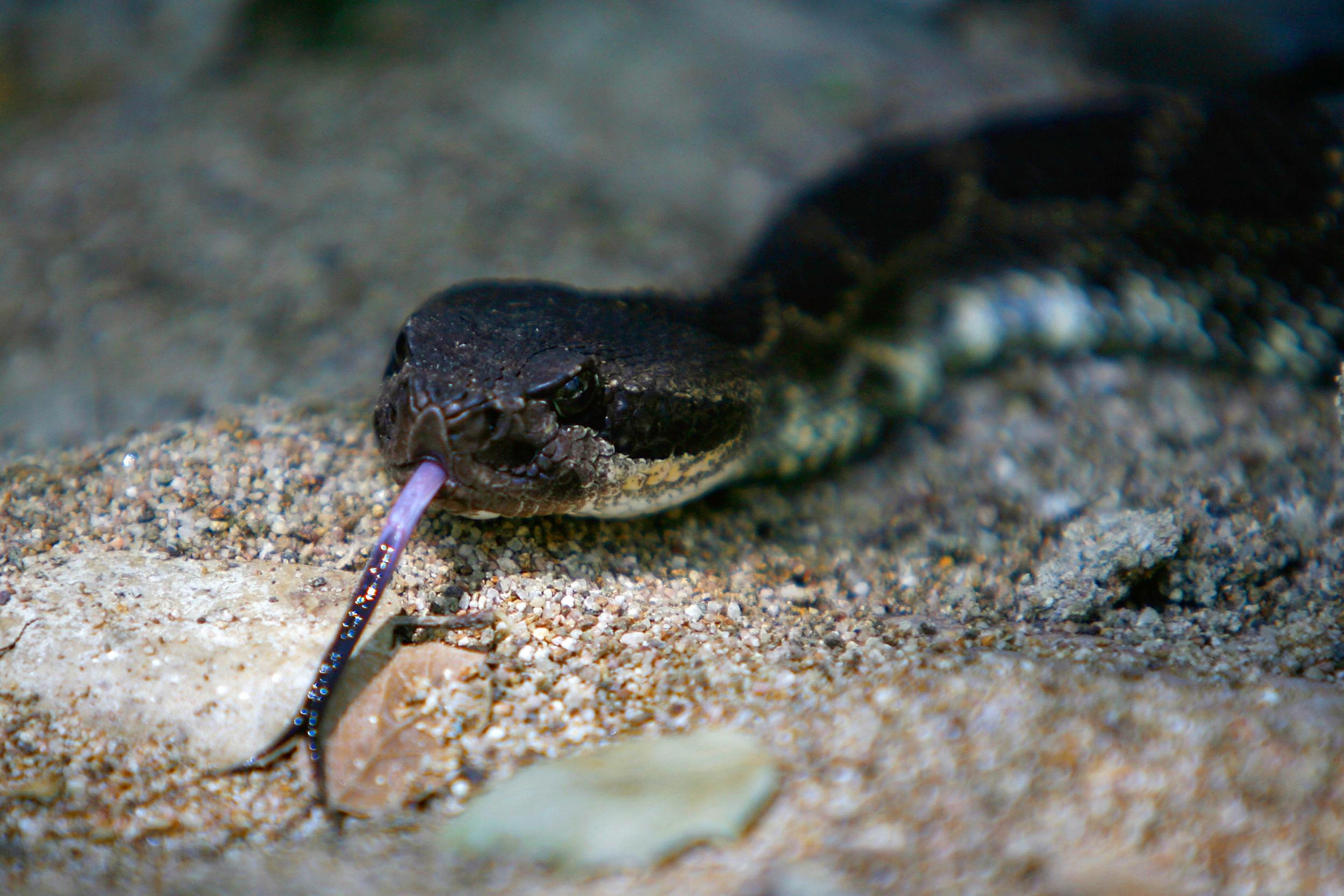Texas man nearly died after being bitten by venomous snake he decapitated, wife says
Jennifer Sutcliffe says husband received 26 doses of antivenom after rattlesnake bite

Your support helps us to tell the story
From reproductive rights to climate change to Big Tech, The Independent is on the ground when the story is developing. Whether it's investigating the financials of Elon Musk's pro-Trump PAC or producing our latest documentary, 'The A Word', which shines a light on the American women fighting for reproductive rights, we know how important it is to parse out the facts from the messaging.
At such a critical moment in US history, we need reporters on the ground. Your donation allows us to keep sending journalists to speak to both sides of the story.
The Independent is trusted by Americans across the entire political spectrum. And unlike many other quality news outlets, we choose not to lock Americans out of our reporting and analysis with paywalls. We believe quality journalism should be available to everyone, paid for by those who can afford it.
Your support makes all the difference.A Texas man thought he had saved his wife from a wayward rattlesnake when he chopped off the animal’s head with a shovel. Instead, the decapitated snake turned and bit him, leaving the man in a coma and his wife fearing for his life.
Jennifer Sutcliffe said she and her husband were doing yard work on Memorial Day weekend – in preparation for a family barbecue – when she spotted a 4-foot long Western diamondback rattlesnake slithering through her flowerbed.
Ms Sutcliffe screamed, she told the Washington Post, altering her husband to the snake’s presence. Her husband ran over and swiftly decapitated the animal with his shovel, leaving both to think the crisis had been averted.
But Ms Sutcliffe was back in the house just ten minutes later when she heard her husband screaming outside. She ran into the yard to find the rattlesnake's fangs embedded in her husband’s hand, she said. The snake had bitten him while he was trying to pick up the remains.
According to experts, snakes can maintain their biting reflexes for at least an hour after they are killed. The headless bodies of snakes have also been known to rise up in a “strike” position even after they are decapitated.
Ms Sutcliffe said she called 911 and immediately began driving her husband to the nearest hospital with antivenom, a little over an hour away. But she quickly realised that her husband, who was seizing and losing vision, wasn’t going to make it that long.
Ms Sutcliffe called an ambulance and eventually had her husband emergency helicoptered to the the hospital. When they arrived, she said, doctors feared her husband might not survive. He was suffering from septic shock and internal bleeding, and some of his organs had started shutting down. Doctors induced a coma and put him on a ventilator.
"A normal person who is going to get bit is going to get two to four doses of antivenom," Ms Sutcliffe told local news station KIIII. "He had to have 26 doses."
Ms Sutcliffe’s husband is now out of a coma and in stable condition, though his kidney function is still weak. Ms Sutcliffe said he often thinks about what he could have done differently.
“The smart thing would have been for him to scoop it up with a shovel, of course, instead of trying to reach down and pick it up with his hand,” she told the Post.
According to Leslie Boyer, an antivenom doctor and founding Director of the University of Arizona VIPER Institute, the best option for dealing with venomous snakes is to call animal control, or simply back away.
Decapitating the snake, she told Gizmodo, is almost never a good idea.
Join our commenting forum
Join thought-provoking conversations, follow other Independent readers and see their replies
Comments